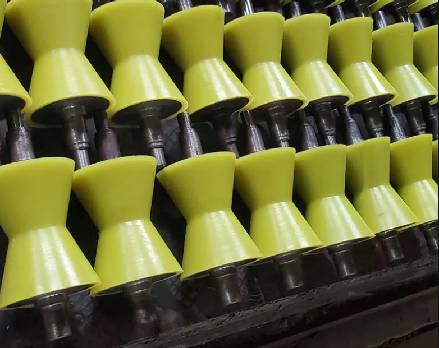 Afrikaans
Afrikaans  Albanian
Albanian  Amharic
Amharic  Arabic
Arabic  Armenian
Armenian  Azerbaijani
Azerbaijani  Basque
Basque  Belarusian
Belarusian  Bengali
Bengali  Bosnian
Bosnian  Bulgarian
Bulgarian  Catalan
Catalan  Cebuano
Cebuano  Corsican
Corsican  Croatian
Croatian  Czech
Czech  Danish
Danish  Dutch
Dutch  English
English  Esperanto
Esperanto  Estonian
Estonian  Finnish
Finnish  French
French  Frisian
Frisian  Galician
Galician  Georgian
Georgian  German
German  Greek
Greek  Gujarati
Gujarati  Haitian Creole
Haitian Creole  hausa
hausa  hawaiian
hawaiian  Hebrew
Hebrew  Hindi
Hindi  Miao
Miao  Hungarian
Hungarian  Icelandic
Icelandic  igbo
igbo  Indonesian
Indonesian  irish
irish  Italian
Italian  Japanese
Japanese  Javanese
Javanese  Kannada
Kannada  kazakh
kazakh  Khmer
Khmer  Rwandese
Rwandese  Korean
Korean  Kurdish
Kurdish  Kyrgyz
Kyrgyz  Lao
Lao  Latin
Latin  Latvian
Latvian  Lithuanian
Lithuanian  Luxembourgish
Luxembourgish  Macedonian
Macedonian  Malgashi
Malgashi  Malay
Malay  Malayalam
Malayalam  Maltese
Maltese  Maori
Maori  Marathi
Marathi  Mongolian
Mongolian  Myanmar
Myanmar  Nepali
Nepali  Norwegian
Norwegian  Norwegian
Norwegian  Occitan
Occitan  Pashto
Pashto  Persian
Persian  Polish
Polish  Portuguese
Portuguese  Punjabi
Punjabi  Romanian
Romanian  Russian
Russian  Samoan
Samoan  Scottish Gaelic
Scottish Gaelic  Serbian
Serbian  Sesotho
Sesotho  Shona
Shona  Sindhi
Sindhi  Sinhala
Sinhala  Slovak
Slovak  Slovenian
Slovenian  Somali
Somali  Spanish
Spanish  Sundanese
Sundanese  Swahili
Swahili  Swedish
Swedish  Tagalog
Tagalog  Tajik
Tajik  Tamil
Tamil  Tatar
Tatar  Telugu
Telugu  Thai
Thai  Turkish
Turkish  Turkmen
Turkmen  Ukrainian
Ukrainian  Urdu
Urdu  Uighur
Uighur  Uzbek
Uzbek  Vietnamese
Vietnamese  Welsh
Welsh  Bantu
Bantu  Yiddish
Yiddish  Yoruba
Yoruba  Zulu
Zulu Top Manufacturers of Conveyor Components and Their Key Offerings for Industrial Needs
An Overview of Conveyor Components Manufacturers
Conveyor systems are integral to modern manufacturing and logistics, providing efficient material handling solutions across various industries. Underpinning these systems are conveyor components that are crucial to their operation, safety, and efficiency. As industries evolve, conveyor component manufacturers are responding to the increasing demand for innovative solutions that cater to diverse applications.
The Importance of Conveyor Components
Conveyor components include a variety of parts, each playing a significant role in the overall functionality of the conveyor system. Key components typically include rollers, belts, pulleys, chains, and drive systems. These components are designed to work in synergy, ensuring that materials can move seamlessly from one point to another.
The quality and reliability of these components are paramount. For instance, rollers must provide smooth movement while being durable enough to withstand the weights and materials they transport. Similarly, belts are critical as they connect various parts of a conveyor system and must be made to handle specific loads and conditions.
Types of Conveyor Components
1. Rollers These are the core components that support the conveyor belt and provide the necessary movement. Rollers can be made from various materials, such as metal, plastic, or rubber, to suit different operational needs.
2. Belt Systems Conveyor belts come in various designs tailored for specific tasks, ranging from heavy-duty belts for material handling in factories to light-duty belts used in small packaging operations.
3. Pulleys Essential for changing the direction of the belt and providing drive. They are typically powered by electric motors or other drive mechanisms.
4. Chains and Sprockets Often used in roller chain conveyors, where they help move heavy loads and are highly efficient.
conveyor components manufacturers

5. Drive Units The power source of the conveyor system, drive units can be electric or hydraulic, depending on the application requirements.
6. Guides and Supports These components help direct the movement of the materials and maintain the alignment of the conveyor system.
Innovations in the Industry
With advancements in technology, conveyor component manufacturers are innovating to improve the performance and efficiency of conveyor systems. Increasingly, manufacturers are focusing on the development of smart conveyor components equipped with sensors and IoT technology. These innovations allow for real-time monitoring and predictive maintenance, which can significantly reduce downtime and operational costs.
Sustainability is also becoming a priority in the manufacturing of conveyor components. Many manufacturers are exploring eco-friendly materials and processes, aiming to reduce the environmental impact of production. For instance, using recycled materials in the production of conveyor belts and reducing energy consumption during manufacturing are steps taken toward more sustainable practices.
The Role of Manufacturers in Industries
Conveyor components manufacturers play a vital role not just in production but also in creating tailored solutions for their clients. They often engage in consultations to understand the specific needs of businesses, providing customized solutions that can enhance operational efficiency. These partnerships lead to innovative logistics solutions that improve productivity in sectors such as food processing, automotive, packaging, and warehousing.
Conclusion
The conveyor component manufacturing industry continues to grow and evolve, responding to the dynamic needs of various sectors. As technology accelerates, manufacturers are called to innovate and adapt, ensuring that their components not only meet current demands but also set the stage for future advancements. By investing in quality components and embracing innovative practices, manufacturers play a crucial role in enabling industries to achieve greater efficiency and productivity, ultimately enhancing the global supply chain.
-
Revolutionizing Conveyor Reliability with Advanced Rubber Lagging PulleysNewsJul.22,2025
-
Powering Precision and Durability with Expert Manufacturers of Conveyor ComponentsNewsJul.22,2025
-
Optimizing Conveyor Systems with Advanced Conveyor AccessoriesNewsJul.22,2025
-
Maximize Conveyor Efficiency with Quality Conveyor Idler PulleysNewsJul.22,2025
-
Future-Proof Your Conveyor System with High-Performance Polyurethane RollerNewsJul.22,2025
-
Driving Efficiency Forward with Quality Idlers and RollersNewsJul.22,2025





























